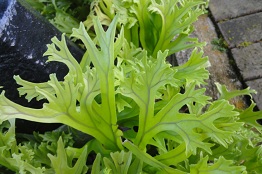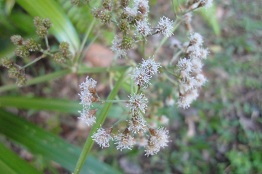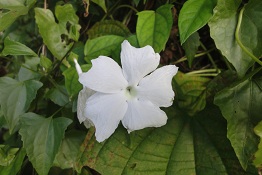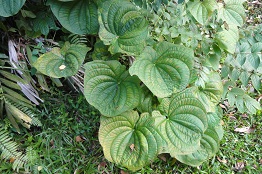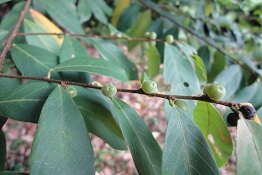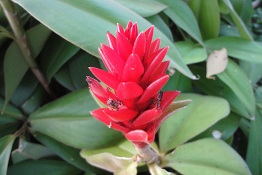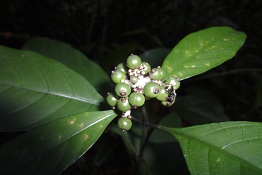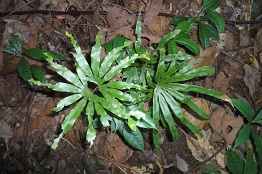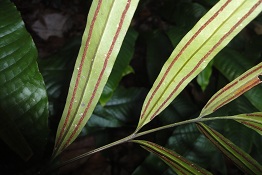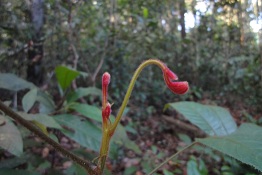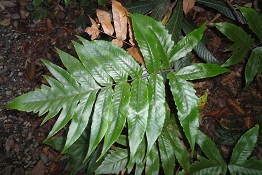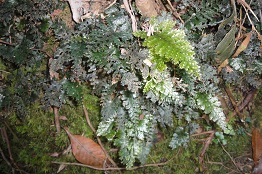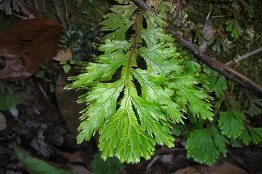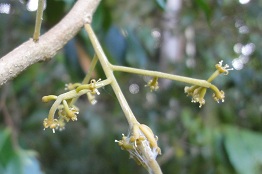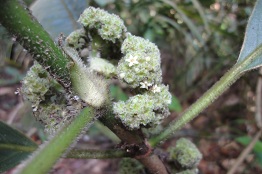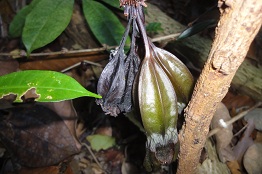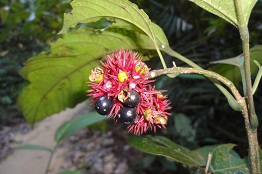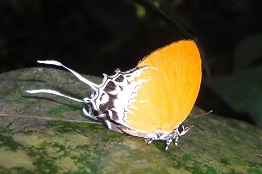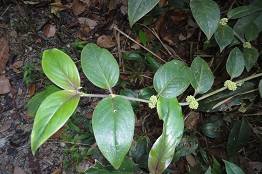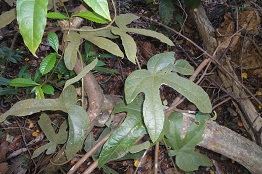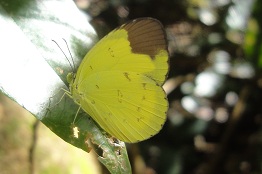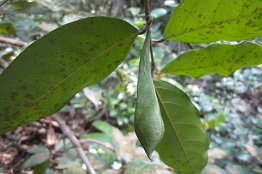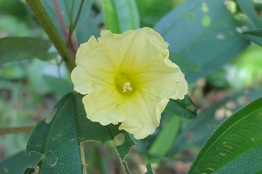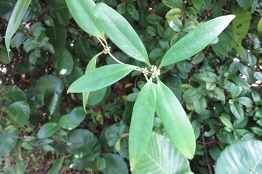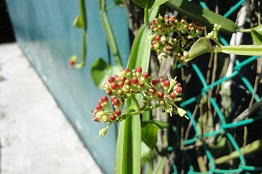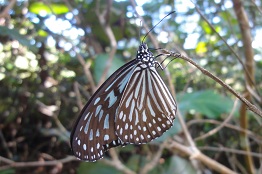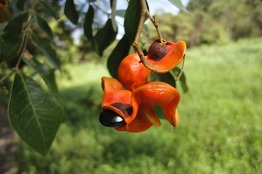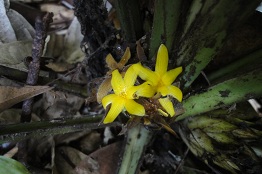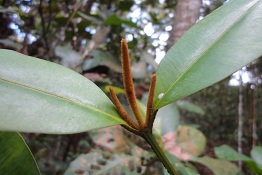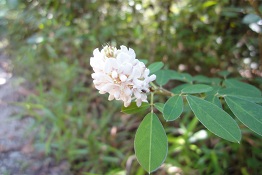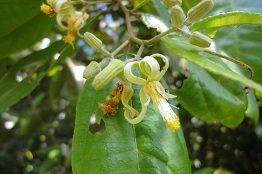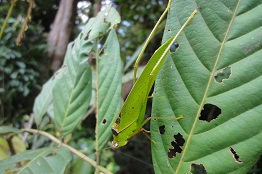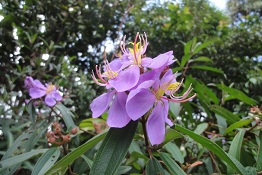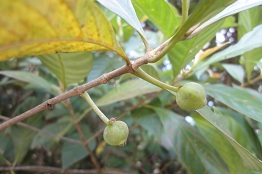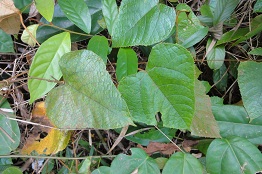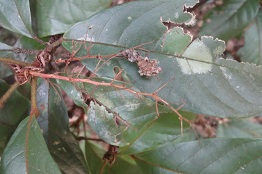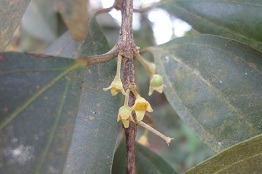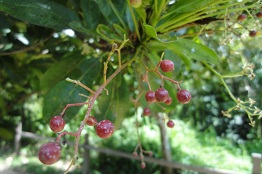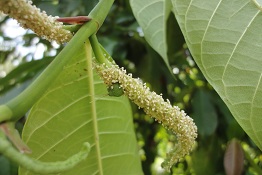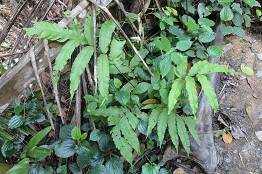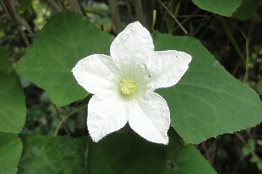Highlight:

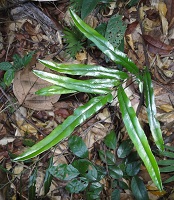 This was the longest field trip that I had undertaken, well over
6 hours on foot. I started around 7:30 am at the entrance of the MacRitchie Reservoir Park and ended at Venus Drive carpark around 1:30 pm.
This trip was prompted by a fern expert from Germany who had recently visited MacRitchie and had taken the time to share with me a fern,
Lindsaea ensifolia (Graceful Necklace Fern), he saw there but was missing in my website.
He had also seen the fertile fronds of Lygodium circinnatum which I had yet to
discover. [Correction: The name of the fern is not Lygodium circinnatum, it should be
Lygodium longifolium instead.]
This was the longest field trip that I had undertaken, well over
6 hours on foot. I started around 7:30 am at the entrance of the MacRitchie Reservoir Park and ended at Venus Drive carpark around 1:30 pm.
This trip was prompted by a fern expert from Germany who had recently visited MacRitchie and had taken the time to share with me a fern,
Lindsaea ensifolia (Graceful Necklace Fern), he saw there but was missing in my website.
He had also seen the fertile fronds of Lygodium circinnatum which I had yet to
discover. [Correction: The name of the fern is not Lygodium circinnatum, it should be
Lygodium longifolium instead.]
I had missed Lindsaea ensifolia in the past as it is very similar in its overall appearance to another fern, Taenitis blechnoides, found in the same habitat. The 2 strips of spore-containing bodies in Taenitis blechnoides is located away from the margin of the fronds while that in Lindsaea ensifolia is located along the margin of the fronds. As for Lygodium circinnatum, I did see quite a number there but not one with fertile fronds.
Walking below the forest canopy, I had found at least 5 different types of fruits or seeds on the forest floor along the way. Three of them were new to me. From left to right: Knema globularia (Seashore Nutmeg), Litsea castanea, Ixonanthes reticulata, Prunus polystachya (Bat Laurel) and Ficus glandulifera (Gaping Fig).
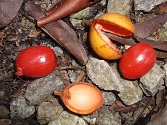
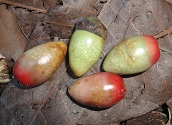
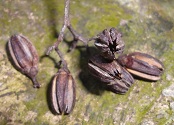

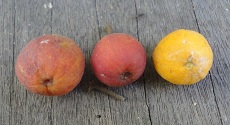
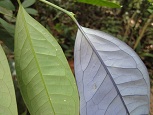
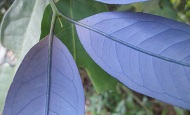 A young plant with bluish young leaves caught my attention along
the trail. Young leaves that are red in colour are considered quite common. Blue leaves are unusual. Coincidently, I saw the blue leaves
again 30 minutes later in another location except that this time round, the leaves are from a mature tree. After doing some homework later,
I believe it is Syzygium ridleyi
A young plant with bluish young leaves caught my attention along
the trail. Young leaves that are red in colour are considered quite common. Blue leaves are unusual. Coincidently, I saw the blue leaves
again 30 minutes later in another location except that this time round, the leaves are from a mature tree. After doing some homework later,
I believe it is Syzygium ridleyi
There were 3 plants that I had yet to identify. One had full bloom flowers while the other 2 had only flower buds [Update: Xylopia malayana]. In the pictures below, their leaves were shown by the side of the flowers. The flower buds of first plant appeared to be in pairs. Judging from the overall appearance of the flower bud of the second plant, it may be a Calophyllum species [Update: Calophyllum pulcherrimum]. The third plant's flowers are quite similar to that of Glochidion littorale (Monkey Apple) but the leaves are not exactly the same in appearance [Update: Glochidion lutescens].
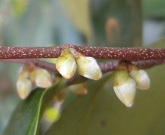
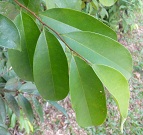
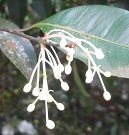
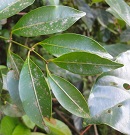
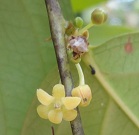
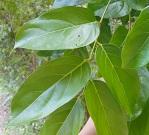
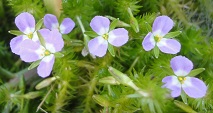 Another new plant (picture right) that I came across was an aquatic
plant, Mayaca fluviatilis (Stream Bogmoss). It is naturalised and can be found
flourishing in several locations along the bank of the reservoir. Other than plants, I had also spotted quite a handful of animals where
4 of them were highlighted below.
Another new plant (picture right) that I came across was an aquatic
plant, Mayaca fluviatilis (Stream Bogmoss). It is naturalised and can be found
flourishing in several locations along the bank of the reservoir. Other than plants, I had also spotted quite a handful of animals where
4 of them were highlighted below.
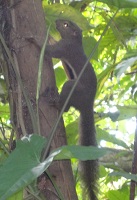
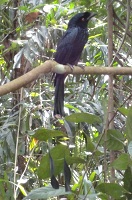 The Plantain squirrel (Callosciurus notatus) is a common
creature in parks and forested areas. The black bird with two long extended tail feathers is the Greater Racket-tailed Drongo
(Dicrurus paradiseus).
The Plantain squirrel (Callosciurus notatus) is a common
creature in parks and forested areas. The black bird with two long extended tail feathers is the Greater Racket-tailed Drongo
(Dicrurus paradiseus).
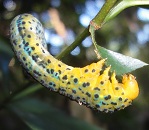
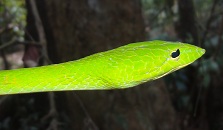 As for the large yellow caterpillar with dark spots feeding on the
leaves of a Carallia brachiata (Freshwater Mangrove) shrub, it should be the
caterpillar of the Geometrid Moth (Dysphania malayanus).
The final creature shown was the common Oriental Whip Snake (Ahaetulla prasina), a reptile that I had seen for the second time this
month. The last time was during my last trip at Labrador Nature Reserve earlier this month.
As for the large yellow caterpillar with dark spots feeding on the
leaves of a Carallia brachiata (Freshwater Mangrove) shrub, it should be the
caterpillar of the Geometrid Moth (Dysphania malayanus).
The final creature shown was the common Oriental Whip Snake (Ahaetulla prasina), a reptile that I had seen for the second time this
month. The last time was during my last trip at Labrador Nature Reserve earlier this month.
For this trip, I had kept to Lornie Trail, Golf Link, Sime Track, Terentang Trail and Venus Link. I had given the tree-top bridge a miss as I was running out of my designated time for this outing. I will be back to explore the other trails around the area when I manage to figure out the time to do so.
Photo Gallery:
Below are selected photos from this trip arranged according to the sequence that they were taken. There is a text link under the photo that will direct you to more photos of the same species if they are available in my website.
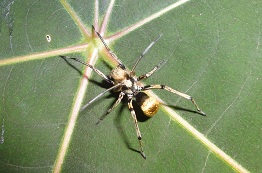
DSC08966
Jumping spider that resembles an ant
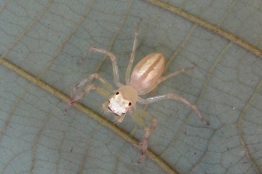
DSC09117
Jumping Spider
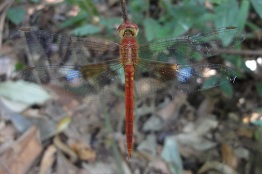
DSC09136
Tholymis tillarga
(White-barred Duskhawk)
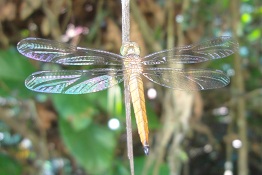
DSC09218
Orchithemis pulcherrima
(Variable Sentinel)
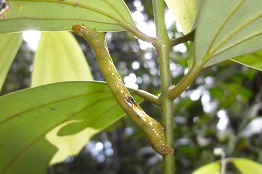
DSC09271
Moth Caterpillar
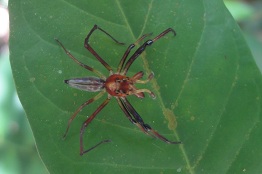
DSC09292
Bathippus species
(Jumping Spider)
Statistics:
